VMware vSAN has delivered on the promise of HCI in large part by simplifying the purchase, deployment and maintenance of vSAN clusters, while still delivering on performance and data services requirements. In June VMware made sweeping updates to the intelligence side of the house, by adding or enhancing vSAN support for vRealize Automation, vRealize Operations and vRealize Log Insight. vRealize Operations 6.6 now pulls together all management functions in one integrated platform. In this review we take a look at the new enhancements through the lens of vSAN, highlighting the new and updated features across the vROps spectrum that VMware identifies as; Ensure Readiness, Operationalize vSAN and Optimize and Scale vSAN.
New Features in vROps 6.6 for vSAN
When launching vROps 6.6, the most obvious change is the new HTML5 interface that looks in tune with the latest versions of the vCenter UI. The main screen is the vSAN Operations Overview. Along the top of the screen is general information for the entire vSAN environment including clusters, hosts, cache and capacity disks, VMs on the clusters, and performance information. Below this admins can select a specific cluster and immediately see information pertaining to that cluster including a summary, storage, component limits, cluster compute, average disk latency, IOPS, and throughput. The bottom left hand corner keeps track of events and alerts giving admins historical data to use to better plan out capacity usage in the future.
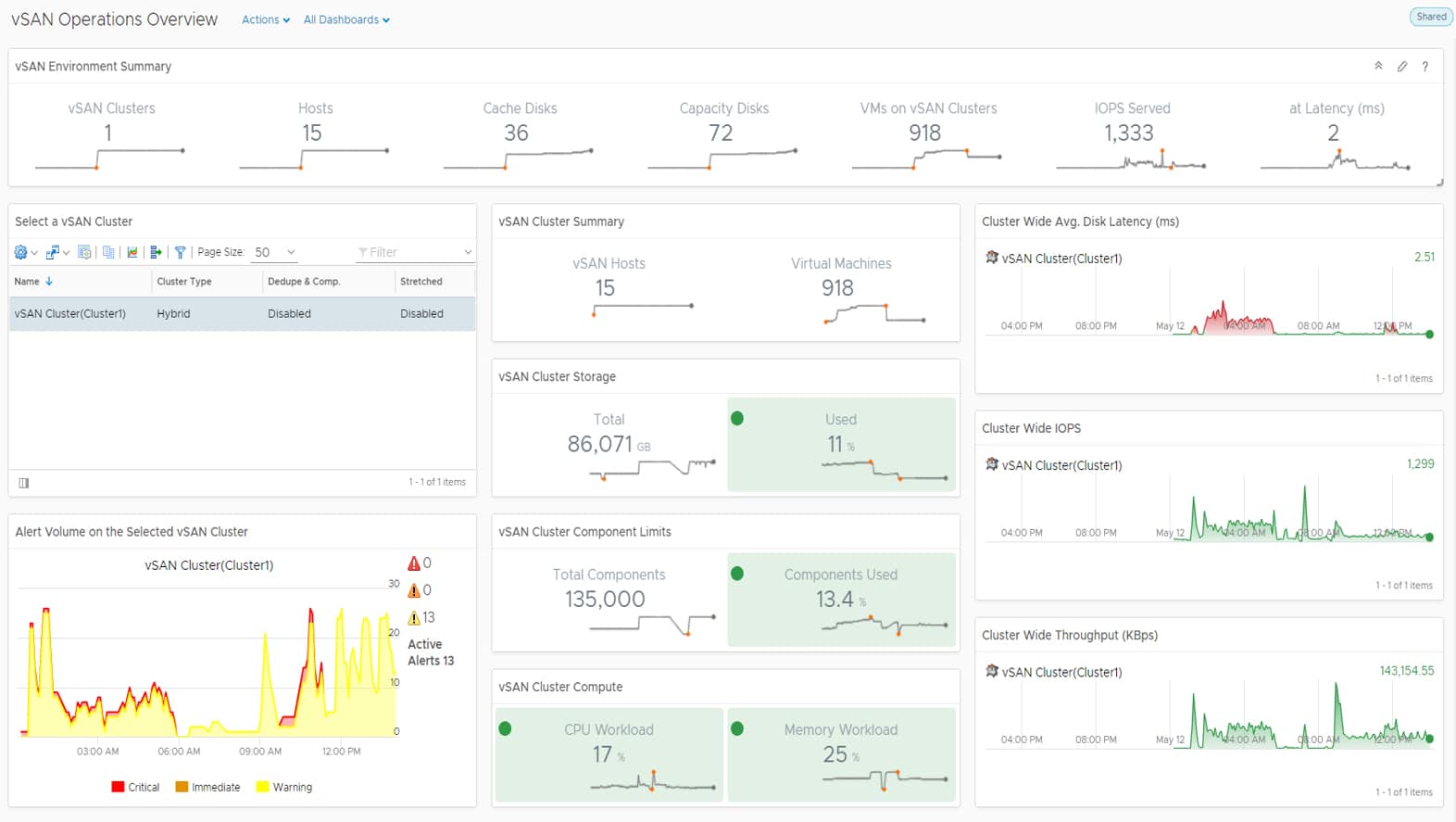
Right-click and open in new tab for a larger image
The vSAN Capacity Dashboard gives admins a quick view of just about anything they need. They can see the overall vSAN capacity contributor (host, disk groups, datastores, and capacity disks). Next to that they can easily see both the total overall capacity they have versus the used disk space. One of the most interesting features is on the top left hand side; here admins can see the direct impact dedupe and compression is having on their vSAN storage. Beneath that is the cluster overview. Here users can select a cluster and immediately see if it needs to be rebalanced and the remaining capacity.
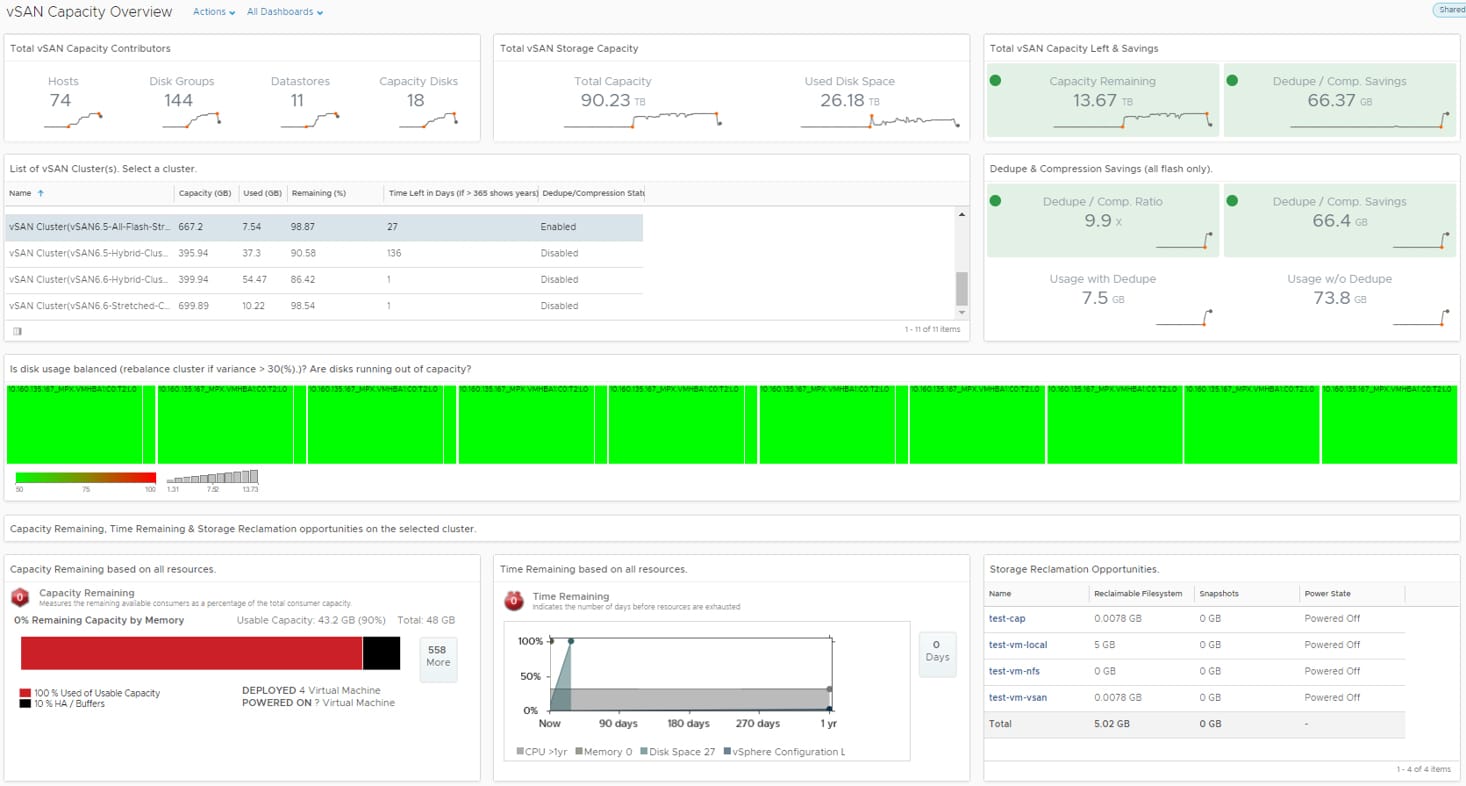
Right-click and open in new tab for a larger image
Updated Features in vROps 6.6 for vSAN
As vSAN grows and gets adopted at a higher rate, it will see more issues arise, as is the case with any technology. The latest version has a more encompassing troubleshooting dashboard. Again it starts at the cluster level with a list of all available clusters. Admins can select a cluster and see if there are any alerts on the cluster, hosts, VMs, or disks. They can easily see if the relatives to the cluster are healthy as well. The dashboard shows if the cluster is busy and what level of performance is being affected.
Right-click and open in new tab for a larger image
Scrolling farther down, admins can see if the write buffer is full (indicated in green) and whether or not the read IOs are being served by the cache. From here admins can take a closer look at the hosts including whether or not they are consistently configured, whether or not the host is busy, the disk groups within the selected host, and if there are any aborted IOPS in the disk group or bus resets in the disk group.
Right-click and open in new tab for a larger image
And scrolling down and diving further into this disk group activity with heat maps for Disk Cache (and whether or not there are any hardware issues) and capacity disks (and again if they are having hardware issues).
Right-click and open in new tab for a larger image
Conclusion
To get access to all the operations goodies available to VMware vSAN users, vRealize Operations Standard is sold on a per CPU basis with a list pf $1250/CPU or per VM ($125/VM in 25 VM bundle). The benefits of vRealize Operations for vSAN are clearly a great value add, increasing for every vSAN cluster that needs to be administered. Admins that cover a large pool of remote/branch office locations will be even more happy to have this sort of actionable data at their fingertips without having to log into every cluster. Some of the best highlights in our view revolve around capacity planning and a clear indicator of data footprint savings with dedupe and compression for all-flash vSAN users. In the end though, this latest vROps update shows VMware’s commitment to making administration of vSAN both easier and more proactive.


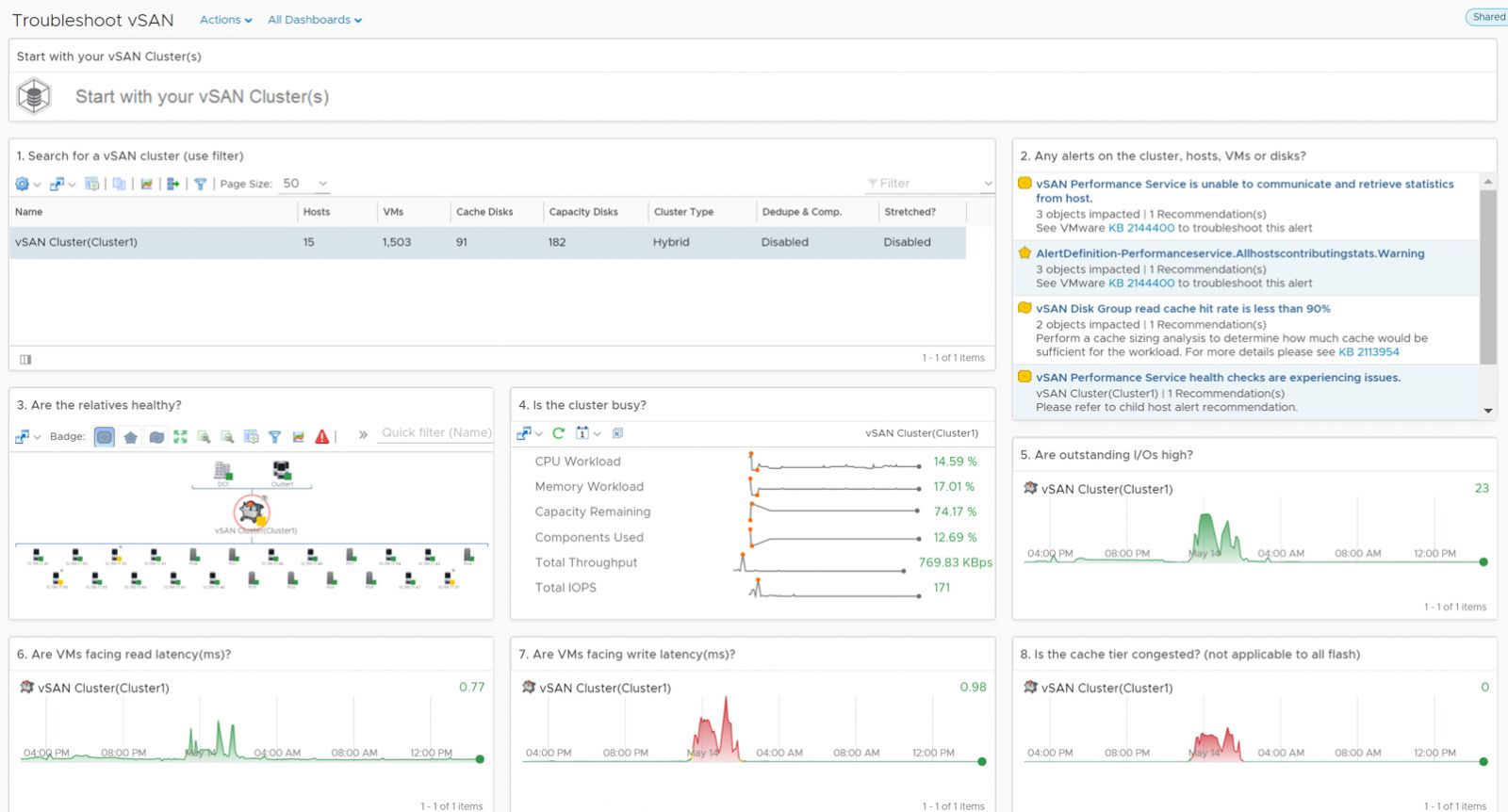
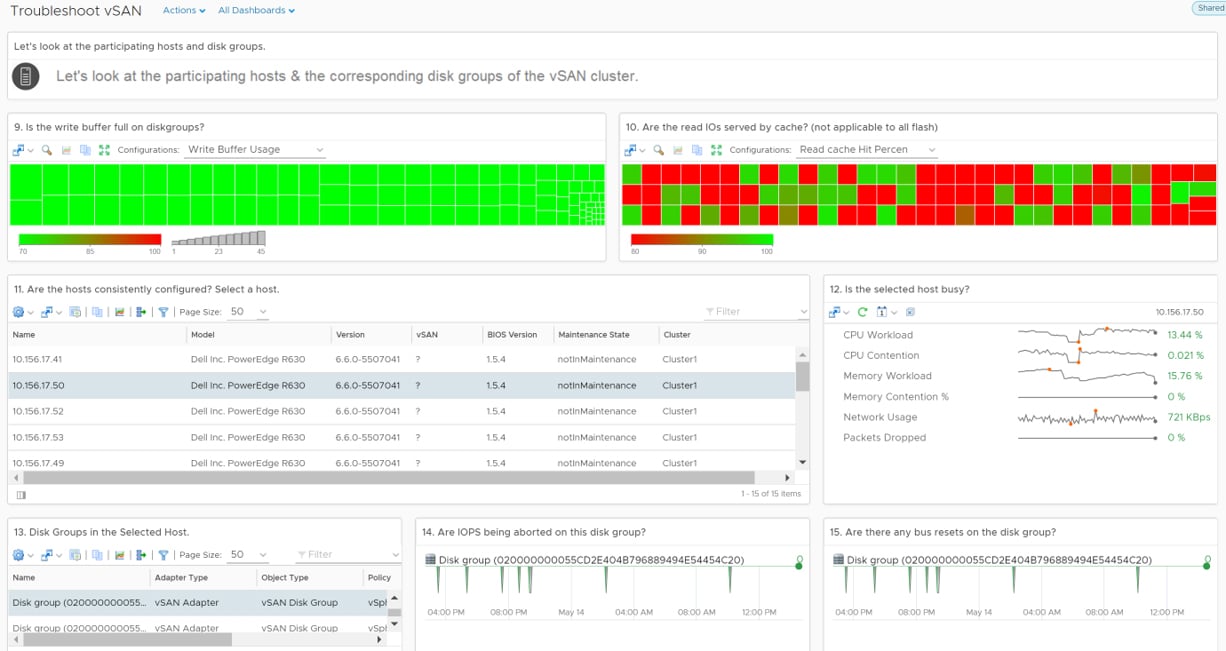
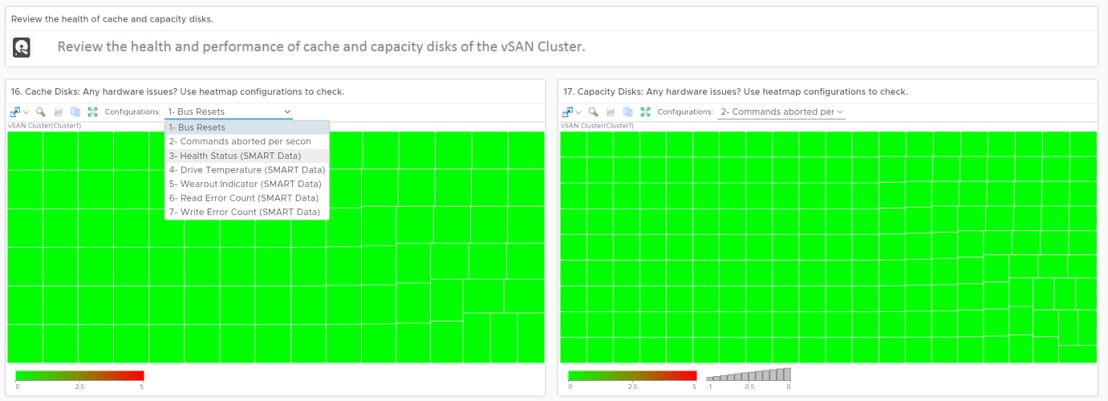


 Amazon
Amazon